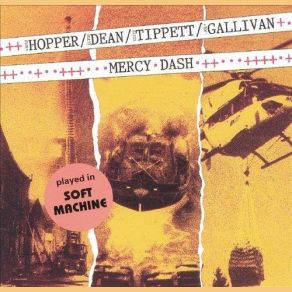Joe Gallivan
Wikimp3 information about the music of Joe Gallivan. On our website we have 5 albums of artist Joe Gallivan. You can find useful information and download songs of this artist. We also know that Joe Gallivan represents Jazz genres.
Biography
[Edit]Given the impressive list of collaborators Joe Gallivan has worked with over nearly four decades, it's surprising that he remains an under-acknowledged figure in the history of jazz. Initially a part of the acoustic tradition, Gallivan got his start in various big band and hard bop ensembles during the late '50s and early '60s. In the decade that followed, the drummer's curiosity was piqued by the electrified textures and world rhythms of fusion. Gallivan went on to pioneer electronics in jazz with his use of the Minimoog and Moog drum.
Born in Rochester, NY, in the early '40s, Joe Gallivan began playing jazz in Miami, FL, at the age of 15: first under Eduardo Chavez and big band leaders Art Mooney and Charles Spivak and later as a member of the Modern Jazz Orchestra. Like many of his early gigs however, none of these engagements lasted very long. After receiving his formal education at the University of Miami, Gallivan moved back to New York in 1961, playing briefly with Donald Byrd and Eric Dolphy in various ensembles. He returned to Miami the following year however to work as a conductor on the television show Music U.S.A., eventually fronting the electric big band, A Train of Thought. It was during this period that Gallivan first became aware of the nascent electronic music technology. Enthralled with the discovery of Karlheinz Stockhausen's early tape-loop composition, "Gesang der Junglinge" (1956), Gallivan subsequently met with musique concrete pioneer Vladimir Ussachevsky. His interest in the new sound technology was sealed when he purchased a Minimoog synthesizer shortly after. The instrument's inventor, Robert Moog enlisted Gallivan to test his new Moog drum which the drummer employed on Gil Evans' 1974 album There Comes a Time. A member of the Evans ensemble for two years, Gallivan also contributed to the sessions for The Gil Evans Orchestra Plays the Music of Jimi Hendrix that same year.
The first half of the '70s also produced the finest small group collaborations of Gallivan's career. The drummer and longtime partner, saxophonist Charles Autsin, were responding at the pinnacle of their interactive powers on the duo exchanges of Mindscapes and Expressions to the Winds. In 1972, Gallivan joined organist Larry Young (fresh from a stint with Tony Williams' Lifetime band) and a guitarist known as Nicholas for a trio date in Washington, D.C.'s Lafayette Park. The resulting Love Cry Want finds the musicians propelled to a territory bordering on free electric-jazz. In 1976, Gallivan moved to Europe, living in London, Paris, and Frankfurt over a 13-year period. He was quick to become reacquainted with the circle of musicians he had met during previous tours, though this list of collaborators inevitably expanded. Originally considered as the replacement for Robert Wyatt in Soft Machine, Gallivan subsequently began working with ex-members Elton Dean and Hugh Hopper. This trio, along with experimental jazz keyboardist Keith Tippett, joined forces for the sessions that produced Cruel But Fair in 1977. Gallivan's avant-garde credentials were further solidified in the early '80s through his recordings with Albert Mangelsdorf, Heinz Sauer, and Christopher Lauer for Frankfurt, Germany's Hessicher Rundfunk, and his playing in the experimental big band Soldiers of the Road. An 11-strong lineup with Dean, bassist Marcio Mattos, and saxophonist Evan Parker was captured on the 1992 Cadence release Innocence.
With the proliferation of jazz reissues at century's end and the advent of independent labels specializing in improvised music, Gallivan was discovering new outlets for his work (both new and old). Love Cry Want became the premiere release on his own New Jazz label, which also released discs with Austin (Timeless) and Powerfield: Gallivan's explosive fusion trio with Gary Smith (guitar) and Pat Thomas (keyboards, samples) heard on Electronic Electric Electronic (1999). Residing in Hawaii throughout the '90s, Gallivan was a regular at the Pacific O, leading a trio with pianist Brian Cuomo and vocalist Jackie Ryan.
Title: Surrender
Artist: Jackie Ryan, Joe Gallivan, Brian Cuomo
Genre: Contemporary Jazz, Vocal Jazz
Title: Des del Silenci (From the Silence)
Artist: Joe Gallivan, Martí Perramón / Marti Perramon
Genre: Jazz




